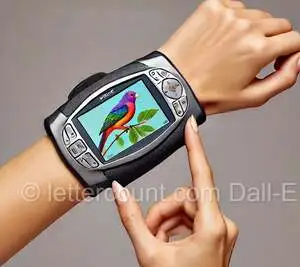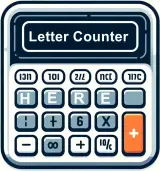Advertising and Character Count: The Science of Impact
Advertising is the science of impact. Whether through attention-grabbing images or enticing commercials (especially food), advertising has a simple goal—have you think about a product enough to act on it, which in most cases, means purchasing. When it comes to advertising, few methods are more effective than a catchy slogan. Just Do It. Think Different. Red Bull Gives You Wings. Red Bull may have cheated a bit by including their name, but each slogan still evokes the imagery of the company it represents. Whether runners in Nike shoes or sleek Apple products, we associate the brand and feel compelled to action. So, if advertising is the science of impact, what is the science and the ingredients behind a great slogan? How are they written, designed, and created for everything from social ads to giant billboards, and why are they so effective? Find out here.
- Advertising And Character Count
- Fewer Letters Are More Memorable
- Simplicity is efficiency
- Clarity and character count
- Desktops, laptops, palmtops, wristops and... fingertops?
- A consistent brand name
Advertising And Character Count
If you are an advertising guru, then you know the importance of character count in any advertisement. The shorter the slogan, the more impact it will create. Everyone remembers:
"Just Do It" - Nike
"I'm Lovin' It" - McDonald's

"Have a Break, Have a Kit Kat" - Kit Kat
"Finger Lickin' Good" - KFC
"Melts in Your Mouth, Not in Your Hands" - M&M's
"A Diamond is Forever" - De Beers
"Impossible is Nothing" - Adidas
The authors of these slogans [1] spent a considerable amount of time comparing various alternative possibilities and adjusting their conciseness using a character counter.
Learn how and why you can also sharpen up your ad copy by using lettercount.com character counter.
Fewer Letters Are More Memorable
When working on an advertising slogan, linguists, writers and advertising specialists join forces to come up with the shortest possible charactercount, bearing in mind that a short message is a clear message. Choosing a brief lettering that conveys memorable emotion, calls to action and uses alliteration to repeat consonants that create a catchy effect - that is the winning formula.
Of course, not all products and services can be advertised in 10 to 20 letters. Some complex offers do need lines and lines of text to reach the consumer and convince them of the superiority and advantages of your brand. In such cases, a larger lettercount is unavoidable... but conciseness always remains paramount.
Simplicity is efficiency
You may like reading the works of James Joyce or Henry James; but leave long circumvoluted sentences and paragraphs to sagas and endless romans-fleuves. In the business of advertising, every single letter counts. Have that in mind throughout the creation process when working on any pamphlet, brochure or website. Make sure your letters are numbered like an archer's arrows: they must hit their target precisely, and in the most efficient manner.
Clarity and character count
Clarity is Queen! How to convey a marketing message that is clearly understandable? - By keeping it short! [2] Besides the character count, your text copy can undergo many other tweaks or refinements. If you are not a linguist yourself, you may need to enroll the help of experts in psycholinguistics, dialects or societal linguistics. They will help you brainstorm ideas to write your advertising letter by letter, taking into account not only the brevity but also the transparence of your product's or service's description. Long and tedious job... that will bear its fruits in the end, when you will have achieved that perfect copy.


Which sign is clearer?
Once all the letters of your brochure or pamphlet are perfectly arranged and published, you will only have to count the results stacking up in your bank account; and the clearer the message, the shorter the character count, the faster you'll see the results grow.
To create a clearly understandable marketing text:
- Keep it simple
- Avoid ambiguous and unclear text
- Use powerful expressions, with succinct character count
- Insert some humor if you can, but never at the expense of too many letters
- Make sure that the tone and style of writing match the image of the company promoted
- Use words and expressions with subliminal meanings, which may convince your target audience of the superiority of your offer.
The power of letters used for marketing is enormous!
Desktops, laptops, palmtops, wristops and... fingertops?

As decades pass, the size of computing and other reading supports is shrinking. At the same time, their variety is increasing. Your target public may now read your advertising message in a printed publication, ranging from broadsheet to tabloid size or smaller; on a giant billboard, or on a device as tiny as a wristwatch. Your character count must accommodate for any of these media; if needed, you'll have to create several versions of your written work, each suited to a particular paper or screen size. [3] Take all your potential customers into account, and don't assume that your target audience uses the same support as you to see the characters you so laboriously typed and counted. Success in advertising may hang to only one letter in your copy; so be careful when writing letter after letter. That way, you can count on results.
A consistent brand name
If you are planning a campaign for a brand name, a politician or a single product or service, remember that the brand name you are promoting must remain consistant across all channels. Brevity is key here: a short, catchy phrase with savantly counted limited number of letters will be able to be reproduced over and over again on TV, radio, printed and electronic press, social media and all other imaginable media. [4] Since the message will be identical all along, its percussive power will be maximal.
